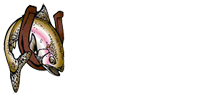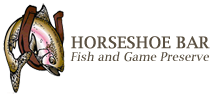April at Horseshoe Bar Preserve
April is the height of the spawning season (March 15 – May 15th). Spawning has an enormous effect on the fishery and it is very important to understand the changes that occur during this period.
The first thing members need to understand is that trout go upstream to spawn. Prior to Folsom Dam being built the Central Valley Steelhead spawned at the club waters and above. Steelheads are Rainbow trout that go to the ocean and the trout that exist at the club are remnants of the Central Valley Steelhead. If Folsom Dam and “Ruck A Chucky” barriers were removed or a fish passage built around them we would see some of our trout begin going to the ocean and become steelhead.
Trout look for spawning areas where the gravel is loose and approximately ½” to 2”. Trout sweep away the dirt over loose gravel to create a nest known as a Redd. If you see an area of gravel that is cleaner than the gravel around it, you should consider this a Redd (fish nest) and avoid it. These Redds are precious so when in doubt do not wade in the area. The trout sweeps the nest with its tail so it can lay its eggs in gravel that will allow water/oxygen to flow over the eggs. A large fish will lay approximately 9000 eggs over its lifetime. As our fish grow we increase the spawn and the number of fish in the fishery.
Three years ago we had approximately 250% of rain and snow pack. That unusually high precipitation allowed for the best spawning season in decades. The first year the club waters were loaded with 6” to 8” fish. Last year we saw an increase in the size of these fish to 10” to 14”. This year the reports have indicated that these fish have now grown to 14” to 18”. All these large fish will help increase the population even more as they are able to lay more eggs as the get larger.
So now that we know that fish go upstream to spawn how does it affect the fishery at the club? The Tunnel Chute is a fish barrier. Our trout are not large enough to climb the Chute. Hence we have two distinct fisheries at the club. Above the Chute is the upper fishery. When the fish go upstream to spawn the area below the campground are not replaced by fish coming upstream. As a consequence fishing will be sparse during spawning season below the campground. The primary place the fish above the Tunnel Chute spawn is the North Fork of the Middle Fork. This is just above the top of the club. The North Fork is an undammed tributary that is ideal for spawning. The North Fork is the primary source of new fish above the tunnel.
Below the Tunnel Chute the fish that come up stream began collecting in the lake because they cannot climb the Tunnel Chute. The lake fills up with these fish coming up to spawn which is why fishing the lake during spawning season is similar to fishing in a trout farm. You can see fish trying to climb the Chute in the early part of the day during this period. They gather at the bottom of the Chute and when they get tired the head back to the slower water outside the tunnel. Eventually, the trout will start heading back down stream to find a place to spawn. Keep in mind that trout spawn in shallow moving water up to about 2’. Because our flows go up and down it has a negative effect on the amount of spawning habitat in the river. If we could keep a constant flow of 300 CFS during spawning season it would maximize the available spawning habitat.
Prior to the new FERC license issued this year our fishery used approximately 6% of the available spawning habitat because of the peaking flows (1000 CFS to 75 CFS). With the new FERC license the minimum flows were increased. This increase in minimum flows has increased the available spawning habitat to approximately 35% of the maximum available spawning habitat. This is not a precise measurement as the habitat is affected by both high and low flows. However, the new flow regime should increase the fish population substantially.
During the recent FERC Studies we learned that the fish population at the club is 4.5 times greater than 10 miles below the club. Our fish biomass is five times higher indicating that our fish are much larger in comparison to the fish downstream. Catch and release does have an effect.
Fish handling, particularly large fish, is critical to maintaining our fishery. Just because a fish swims away, does not mean it will survive. Exhausted fish often swim away but the die of exhaustion shortly thereafter. They may go to the bottom and the die and you will not know. Be sure to revive the fish thoroughly. Someone once told me that taking a fish out of the water after it has put a good fight is equivalent to our running a 400 yard dash and then having someone hold your head under water. Using a net to allow a single large fish time to recover can mean adding as much as 9000 eggs to the fishery. Please, give the fish time to recover. If you want to take a picture make sure the person knows how to use the camera by taking a sample pic in advance of lifting the fish out of the water. Don’t let the fish bang against the rocks and get it back into the water quickly so it can recover before releasing it. Always wet your hand fish before handling the fish to avoid removing the protective slim coating.
There are a number of spawning habitats below the lake. Right below the lake there are a few nice spawning areas where the gravel is ideal. There are also several other good spawning areas all the way down to the Cathedral. Just look for loose gravel that has a small area that been swept clean and that is a likely Redd. If you see a fish hanging around this next do not try to catch it as it will harm the fish while it is in a delicate stage.


Leave A Comment
You must be logged in to post a comment.